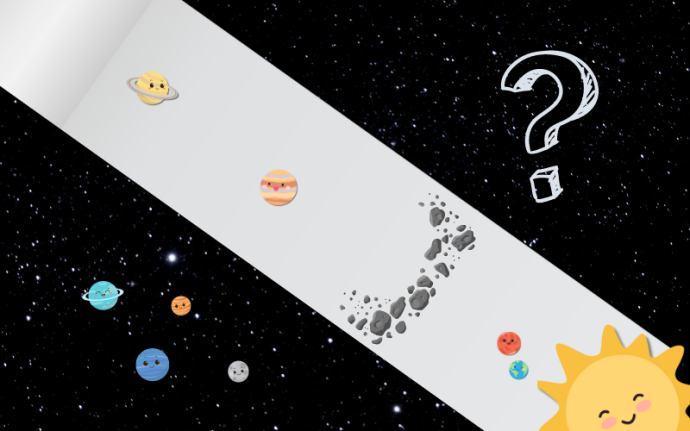Our Solar System contains the Sun, 8 planets, and many small objects like dwarf planets, moons, and asteroids.
Each planet travels around the Sun on a large, curved path called an orbit. The planet with the closest orbit is Mercury. After Mercury comes Venus, Earth, Mars, Jupiter, Saturn, Uranus, and finally Neptune. Most of the asteroids are found in the area of space between the orbits of Mars and Jupiter, called the asteroid belt.
Many of the images you see online don't show the vast scale of the Solar System! Complete this activity to find out how far apart each planet really is.
By the end of this activity you will:
- Be familiar with the order of the 8 planets in our Solar System
- Have created a scale model of our Solar System
- Appreciate the relative sizes of the distances between each planet’s orbit
To complete this activity you will need:
- A3 paper cut into long, thin strips (you could also use a length of till-roll paper or toilet paper)
- Pens or pencils
Files or Documents
Document
Create-A-Pocket-Solar-System-update.pdf
(279.69 KB)
Credit
Document
SSIYP-inc-dwarfs.pdf
(170.53 KB)
Credit
Image

Credit
This work
by The Schools' Observatory
is licensed under All rights reserved
